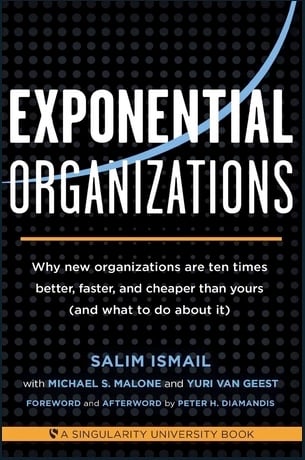Our CEO, Ashton Bishop, reveals what businesses can do to find their next step change, and how to implement the Big 6 Challenges for business growth in this 7-minute Marketing the Invisible podcast with Tom Poland.
Tom Poland, the creator of the Five Hour Lead Generation Challenge, helps businesses generate a flow of high-quality, inbound, new client enquiries. In his interview with Ashton, discover how you can grow your business by leveraging the Challenge Growth System, and together with your solid strategy, marketing, and leadership, create a step change.
Below is an edited transcript of Tom and Ashton’s dialogue.
Who Is Your Ideal Step Change Client?
We’re looking for someone who’s thinking about their next step change. Our challenger set exists from a one-person startup right up to the blue chips.
The blue chip is highest because we’re working with startups, and our specialisation is accelerating through to the middle. The sweet spots are a $5 million turnover to $150 million and accelerating through that.
What Exactly Is a Step Change?
A step change is a step change in growth, so instead of incremental, we would say exponential, tangible, and all of that disruption talk. We’ve been disrupting different industries for about ten years now from maternity wards to funeral homes.
The Problems We Solve at Step Change
What’s the lever to pull? There are six levers that companies who want to make a step change need to navigate. Very few have all the resources to pull all of it at once, and it’s about identifying where to go.
- Strategy — A business strategy beyond business as usual
- Value Proposition — A value proposition that’s predatory and fuels that growth
- Scaled Marketing — We look at scaled marketing foundations and a lot of your philosophies around building assets that scale and pipelines
- Creativity — It’s that je ne sais quoi or the magic that gets people engaged and interested
- Digital — A digital connection for riding it through, not just from a marketing sense but as head of digital systems, from a click to delivery and back again
- Culture & Leadership — Often as organisations scale, the need for founders to become managers and leaders just change.
Recommended reading: The Big 6: The Growth System for Leaders of Challenger Businesses
Symptoms of a Business Needing a Step Change
For some companies, they don’t know which lever to pull, and the suffering they have around that is they do a bottom-drawer strategy instead of a bottom-line strategy.
They spend all this time and money having these great strategies. But then you check in with them a couple of years later, asking how their strategy is, and they go, “Oh, we had such a great time, and it was such good thinking!”
But where is it? Somewhere in the bottom drawer.
Some of our clients have gone from $20 million to a hundred million in four years, and that is significant growth.
We’re not the funny-money type. We love businesses that have unique economics that go and, under their own steam, perform a step change.
So we look for bottom line vs bottom drawer.
Sometimes, organisations have a strategy fatigue. They have a toxic culture where they don’t know where they’re going and why they’re doing this, and then there’s a master of autonomy that comes together with great cultures and great teams.
When someone is experiencing that bottom-drawer strategy and they’ve found that the culture is everything it could be in order to facilitate the next step change, they’re gonna be trying stuff.
Recommended reading: How to Know If Your Strategic Plan Is Really Strategic
On Strategic Problem-Solving: Common Mistakes that Most Organisations Make
The two common mistakes are what we call end strategy and cherry on a mud pie.
End strategy is doing a lot of things that sound so great and is hard to say no to. But what happens is they don’t understand what strategy is and why they need it. Why do we need strategy? Because time, dollars, and focus are scarce and limited resources.
So what’s strategy? It’s where we apply scarce resources for maximum leverage.
If you try to unpack a lot of your success, you focused on one concept, one book, or one program at a time. You stay tight, you do it well, you’re working, and then you jump to the next thing — that’s strategy meets execution.
So with end strategy, we do this and that, but it doesn’t match resources to expectation.
If you try to unpack a lot of your success, you focused on one concept, one book, or one program at a time. You stay tight, you do it well, you’re working, and then you jump to the next thing — that’s strategy meets execution.
Tweet this
Cherry on a mud pie happens when there’s an unwillingness to acknowledge that there’s an underlying issue with the business model, with the culture, with the team, and with the competitor. They know that stuff, so they just add something else on top.
Strategic Thinking: The One Action that Takes Businesses to the Right Direction
We go with New Zealander Ernest Rutherford’s quote here: “We haven’t got the money, so we’ve got to think.”
Quality thinking is in stopping and doing an audit of your context. Most of the issues in businesses, on Boards, and in society generally happen from people trying to do strategy without doing context.
Stop, look, and think. That’s the most important thing.
Here’s a Valuable Free Resource for Businesses
All the Big 6 that we’ve highlighted come together in an audit tool. It’s an audit tool around the Big 6 growth system for leaders of challenger businesses.
If you want to step up and make a step change, this is the audit that draws your attention. It is a self-audit tool that you can take for 10–15 minutes. And there’s no better use of your time.
Conclusion: Ash’s Valuable Advice for Leaders
Stay present. Today is tomorrow. Success is not a destination; it’s an accumulation of habits and choices.
Find out how you perform against the Big 6 Challenges. Take the Strategy Audit today.















